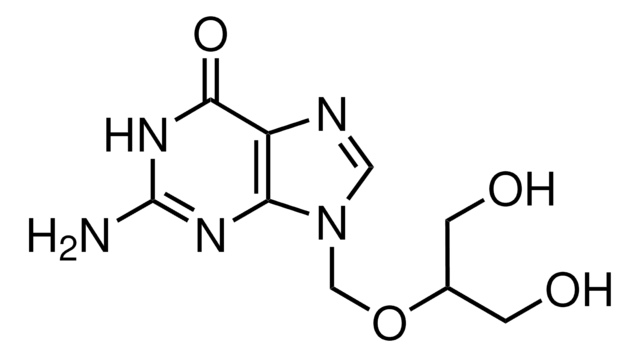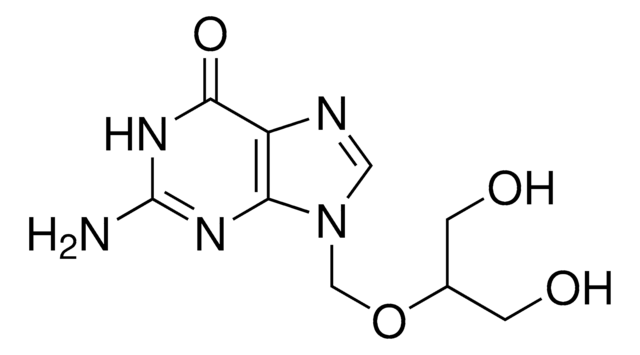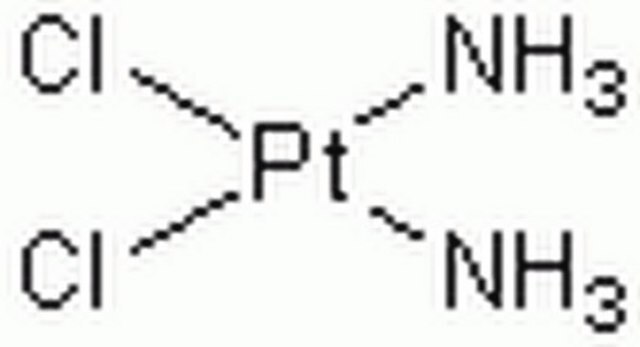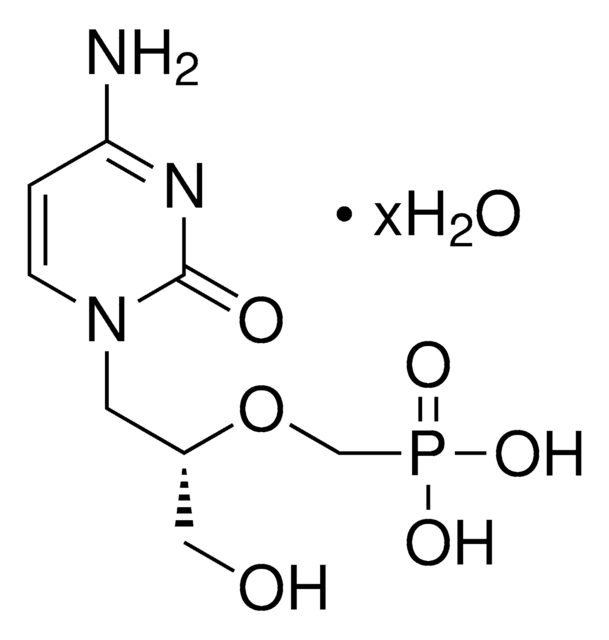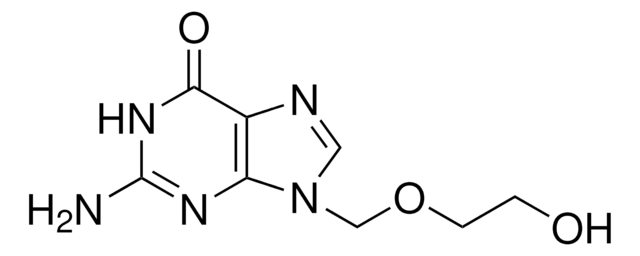345700
Ganciclovir
A nucleoside analog structurally related to Acyclovir.
Synonym(s):
Ganciclovir, 9-[(1,3-Dihydroxy-2-propoxy)methyl]guanine
About This Item
Recommended Products
Quality Level
assay
≥98% (HPLC)
form
solid
manufacturer/tradename
Calbiochem®
storage condition
OK to freeze
desiccated
color
white
solubility
0.1 M HCl: 5 mg/mL
shipped in
ambient
storage temp.
−20°C
InChI
1S/C9H13N5O4/c10-9-12-7-6(8(17)13-9)11-3-14(7)4-18-5(1-15)2-16/h3,5,15-16H,1-2,4H2,(H3,10,12,13,17)
InChI key
IRSCQMHQWWYFCW-UHFFFAOYSA-N
General description
Biochem/physiol Actions
Acts as a prodrug that is activated by phosphorylation
Packaging
Warning
Reconstitution
Other Notes
Qiao, J., et al. 2000. Hum. Gene Ther.11, 1569.
Cannon, J.S., et al. 1999. J. Virol.73, 4786.
Rubsam, L.Z., et al. 1999. Cancer Res.59, 669.
Sprung, C.N., et al. 1999. Proc. Natl. Acad. Sci. USA96, 6781.
Yamasaki, H., et al. 1999. C.R. Acad. Sci. III322, 151.
Halloran, P.J., and Fenton, R.G. 1998. Cancer Res.58, 3855.
Legal Information
signalword
Danger
hcodes
Hazard Classifications
Muta. 1B - Repr. 2
wgk_germany
WGK 3
flash_point_f
Not applicable
flash_point_c
Not applicable
Certificates of Analysis (COA)
Search for Certificates of Analysis (COA) by entering the products Lot/Batch Number. Lot and Batch Numbers can be found on a product’s label following the words ‘Lot’ or ‘Batch’.
Already Own This Product?
Find documentation for the products that you have recently purchased in the Document Library.
Our team of scientists has experience in all areas of research including Life Science, Material Science, Chemical Synthesis, Chromatography, Analytical and many others.
Contact Technical Service